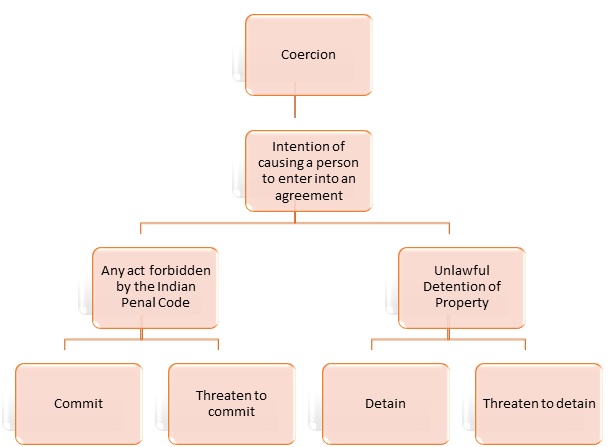Guest Post - Live-in Relationship-A Socio-Legal Taboo?
There are no specific
laws that target live-in relationships, their guidelines are often found in
precedents. Women’s rights under domestic violence act of 2005 are an example
of this. Live-in relations are not recognised under The Hindu Marriage Act of
1995, The Criminal Procedure Code of 1973 or The Indian Succession Act of 1925,
but the expression ‘Relationship in the nature of marriage’ is mentioned under
the definition of ‘domestic relation’ which is defined in the Protection of
women from Domestic violence Act, 2005 which is used in passing judgments
regarding domestic violence cases in live-in relations.
Section 2[f] of the Domestic Violence
Act, 2005 states:
“Domestic relationship” means a relationship between two persons who
live or have, at any point of time, lived together in a shared household, when
they are related by consanguinity, marriage, or through a relationship in the
nature of marriage, adoption or are family members living together as a joint
family.”
By adding the phrase ‘relationship in
the nature of marriage’ to the Domestic Violence Act of 2005, the act
acknowledges live-in relationships which is often left to the interpretation of
the court and gives rights to women in a relationship with a man by considering
their status as something similar to a wife but not the same.
The first landmark judgment where the court upheld live in relations as a valid form of relationship or ‘valid
marriage’, which led to the inclusion of it in the Domestic Violence
Act, 2005 is:
Badri Prasad vs. Dy Director of Consolidation, 1978[1]– This was the first case in which a live-in relationship was interpreted as a ‘valid marriage’ and was recognised by the law. It gave validity to a 50-year long live in the relation of a couple. The judgment was given by Justice Krishna Iyer in which he stated that a strong probability of wedlock rises when a couple has been living together like husband and wife for a long time. Although this presumption can be rebutted as a heavyweight lies on the person who is depriving the relationship of its legal origin. Law sides towards the favor of legitimacy.
Relationship dynamics have shown a complete shift in the new
millennium. As opposed to the older norms of cohabitation after marriage,
younger couples are now taking the plunge straight into living together without
having to tie the knot. Marriage has always been acknowledged as a way of
making a relationship official lawfully with the consent of the parents of the
people involved. But nowadays couples have started to test their compatibility
before getting married by living together prior to making any legal
commitments. Whereas, some couples forgo the idea of marriage altogether and
decide to cohabitate as they already share a life, and thus they can also
escape the legal/family burden and complications that arise with the idea of
marriage. In India, live-in relationships are a fairly new concept and
therefore not as welcomed by the people. Live-in relationships, though not
being illegal, is still considered to be a social taboo. According to
traditional Indian culture, pre-marital sex and cohabitation are considered to
be an offence and marriage is the only destination allotted to a successful and
righteous relation. This is one of the main reasons as to why live-in
relationships are still not completely socially accepted in India.
Even though the society advocates that live-in relationships are
immoral, Indian precedents lead us to believe otherwise. Indian Courts have time
and again highlighted that the immorality associated with such kind of
relationships does not affect the legality of these relationships. There are no
prevailing laws directed towards live-in relationships, however, the Indian
courts have shed some light to clarify it by including it in existing
legislations through various judgments bestowing it with some rights and obligations
that married couples are awarded. Some important judgments that have been
passed by the courts on the subject of live-in relationships are listed below:
· Payal Sharma vs. Superintendent, Nari Niketan,
Agra, C.M. Hab. Corp. [2]- In 2001, the Bench consisting of Justice M. Katju and Justice R. B. Mishra
of Allahabad High Court observed that “A man and a woman, even without getting
married, can live together if they wish to. This may be regarded as immoral by
society, but is not illegal. There is a difference between Law and Morality.”
· Khushboo vs Kanniammal & Another[3]- On 28 April 2010 Special Bench of the Supreme Court of India
consisting of K.G. Balakrishnan, Deepak Verma, B.S. Chauhan posed a question
"If two people, man and a woman, want to live together, who can oppose them?
What is the offence they commit here? This happens because of the cultural
exchange between people.” The Supreme Court then went on to hold that Live In
Relationships are permissible under and are a part of the right to life Art.21
of the Indian Constitution and is thus not a "criminal offence".
· Patel and others Case[4]- In this particular case, the Supreme Court observed that the two
adults who are bound in a live-in Relationship without a formal marriage are not
criminal offenders. No legislation has ever been enacted by the Indian Parliament
which denounces any live-in Relationship as illegal. The above judgment was
made applicable to Tulsa v. Durghatiya[5]
by the Supreme Court and the rule that there would be a presumption of marriage
u/S.114 when there has been long cohabitation was re-recognized.
· Mohabhat Ali v. Md. Ibrahim Khan[6]- Their Lordships of the Privy Council laid down
that: The law presumes in favour of marriage and against concubinage when a man
and woman has cohabited continuously for a number of years.
Live-in Relationship- A Legal Taboo
The concept of live-in relationships can also be a legal taboo up to
some extent as it is always in the eyes of law considered to be an institution ‘akin
to marriage’ or ‘supposed marriage’. All the rights or laws regarding people in
such relationships stems from the fact that it is a concept like marriage and
not a form of relationship in itself. When live-in relationships were included
in the definition of Domestic Relations in Domestic Violence Act, 2005; the
legislature referred to it as ‘a relationship in the nature of marriage’. Even
now, such relations are not given their own independent recognition legally. This
can be perceived from recent judgments of Indian Courts where they have
accorded the status of a child born to a couple in a live-in relationship as a
child born out of marriage presuming the relationship to be in nature of
marriage,
• S.P.S. Balasubramanyam v. Suruttayan[7]-
The Supreme Court held that “If a man and woman are living under the same roof
and cohabiting for some years, there will be a presumption under Section 114 of
the Evidence Act that they live as husband and wife and the children born to
them will not be illegitimate.”
• Revanasiddappa & Anr. vs Mallikarjun & Ors[8]- A special Bench of the Supreme Court of India
consisting of G.S. Singhvi, Asok Kumar Ganguly remarked that irrespective of
the relationship between parents, the birth of a child has to be viewed
independently of the relationship of the parents. It is as plain and clear as
sunshine that a child born out of such a relationship is innocent and is entitled
to all the rights and privileges available to children born out of valid
marriages. This is the crux of Section 16(3) of the amended Hindu Marriage
Act, 1955.
CONCLUSION
Owing to these judgments we can
conclude how live-in relationships are not lawfully wrong but are yet scrutinised
critically under the social and legal microscope. The reason as to why the new generation
prefers or inclines towards this arrangement prior to making a legally binding
contract of marriage is perfectly justifiable and even efficient. As the times have changed and the paradigm of relations have drastically shifted from the older
norms to the modern traditions, the society too needs to change their perspectives to fit these new
circumstances and make them ‘the new normal’.




Comments
Post a Comment